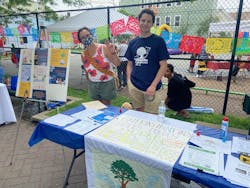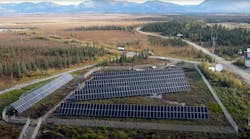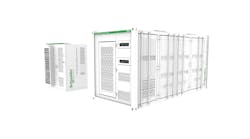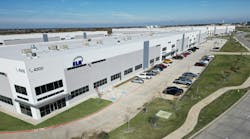A community-led virtual microgrid “without borders” that began in Chelsea, Massachusetts, is expanding and, along with it, the impact of the project, which is expected to serve as a model for other municipalities.
In late June, the Chelsea City Council approved a plan to move forward with the virtual microgrid, a partnership between the city, community groups and business organizations. The council approved the financing, with Ameresco serving as contractor under an energy services contract. The city approved a $3.6 million loan from Bank of America. The project also received state grant funding of $1.03 million, said David Dayton, CEO of Clean Energy Solutions, a consultant to the project and a key player in the team that conceived of the project.
Under the energy services agreement, Ameresco guarantees that the savings the city realizes from the solar and battery will be greater than the debt service on the loan, Dayton said.
Meanwhile, plans are underway to add virtual microgrids in Milton, Cambridge and Chinatown, he said.
The project's success is linked to gaining buy-in from community members and the involvement of environmental and social justice organizations. Partners in the project include GreenRoots, an environmental justice group, Climable, a nonprofit working to bridge the gap between scientific research and policymaking, the city of Chelsea and Synapse Energy Economics, an environmental consultant. Also included in the effort is Green Justice Coalition, which includes Clean Water Action, the Chinese Progressive Association and Resilient Urban Neighborhoods.
Deploying microgrids from the neighborhood up
“If you’re going to do a neighborhood microgrid, gaining the people's trust is essential. You can’t bring it down from the top and say, ‘This is good for you,’” said Dayton.
Dayton helped launch the virtual microgrid project with the intention of creating environmentally sustainable projects that could address social justice issues. The project targets underprivileged and lower-income communities that historically haven’t had access to these benefits.
“I was lucky enough to find the Green Justice Coalition and other partners,” said Dayton.
Dayton and his partners formed a coalition six years ago and the groups have met every three weeks. The project participants selected Chelsea and Chinatown partially due to their progressive city councils and the presence of organized, trusted bodies in the communities, he said.
Solar and storage planned for public buildings
As a result of the Chelsea City Council vote, about 1,000 kWh of battery storage will be deployed – half at Chelsea City Hall and half at Chelsea’s police department. About 1,000 kW of solar will be located at the Department of Public Works warehouse.
In Chelsea, the microgrid project will include city buildings initially, which will have solar rooftop systems. The plan is to branch out to health centers, low-income housing and other facilities after the initial phase.
Each building in the project will remain a customer of Eversource, the utility company, and can remove its load from the grid during peak hours or when the grid fails – and get paid through demand response programs.
Sari Kayyali, microgrid manager for GreenRoots, said the virtual nature of the microgrid is unusual, as is the community involvement.
If you can’t string wires, create a virtual microgrid
Because it was difficult to network microgrids together physically – due to utility restrictions – the microgrids will be networked virtually to form a virtual power plant (VPP), said Kayyali.
"We can't string wires between them because we're not a utility, but we can connect them through the cloud, which means while we can't ship electricity from building to building, we can ship information from building to building,” said Dayton.
Under the project, the loads of all three buildings can be aggregated into a VPP and taken off the grid at the same time, which aids the grid during periods of stress – and creates resilience for the communities.
The pros and cons of a virtual system
“We can also put in displays for the people so they can see what's happening with the whole microgrid in the city," added Dayton.
One disadvantage of the virtual model: The coalition needs to install storage on every building to gain resilience, said Kayyali. Fire departments are cautious about batteries due to the possibility that they will overheat; the coalition is working to ensure the fire officials are on board.
Creating a governance format for the microgrid
Moving forward, the project participants need to work out governance for the project, according to Dayton.
For example, the project organizers have not yet nailed down microgrid asset governance. They have to decide who owns the assets and how the benefits of the microgrid will flow to different participants such as the police station.
Legal challenges are also on the horizon. The Chelsea project will include new types of interactions with both public and private facilities as the project’s coalition works to include neighborhood health centers, low-income housing and other facilities. These interactions have legal implications that still need to be fully solved, Dayton said.
“Moving to the next phase – where we combine public and private facilities in a single city and decide who owns the assets and how the low-income tenants benefit – that has not yet been approved,” said Dayton.
In addition, fundraising may remain an issue for Milton, Cambridge and Chinatown.
Other cities aren’t as far along as Chelsea in raising funding, he said.
Bringing clean energy to low-income communities
While each city will develop its microgrid independently, the information gained through the projects will be shared among the participating cities, helping the projects adapt, improve and increase innovation.
Dayton, a renewable energy developer, came out of retirement to work on the virtual microgrid, and is happy he did.
“I have retired twice and this was what I wanted to do – find a way to bring renewable energy benefits to low-income people,” he said.








